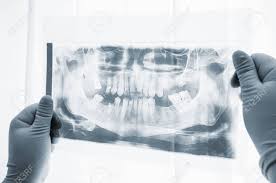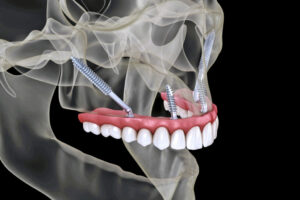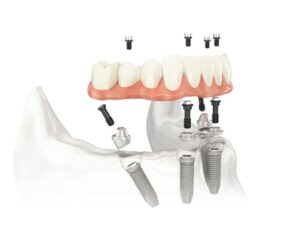
18 Apr Can You Have Dental Implants with Severe Bone Loss? Expert Insights
When dealing with severe bone loss, precision is paramount. It’s not just about looking at X-rays like many people are used to when visiting a dental clinic. The reality is that dental professionals use advanced techniques like CBCT scans to get a full 3D picture of what’s going on inside the patient’s mouth. So, why the extra work, you ask? Well, bone loss is tricky territory and having the full details about your exact bone density and structure can make a major difference in your dental health.
This scanning technique provides a comprehensive view of the jawbone, enabling dentists to see the bone structure from various angles. Essentially, it transforms what looks like a simple gap in teeth into an intricate landscape of bones and tissues. With severe bone loss, these insights determine whether traditional implants will be stable in the weakened bone structure or whether alternative solutions like zygomatic implants or the All-on-4 concept would be more suitable for the patient’s specific condition. To put it into perspective, these CBCT scans guide dentists in determining where it’s safe to secure dental implants.
This level of tailored care and foresight means that patients struggling with severe bone loss have more options available than ever before when it comes to restoration. They’re no longer left without hope due to unstable bone structures; instead, alternative techniques allow for satisfying outcomes by bridging conventional gaps.
Now let’s discuss how these advanced imaging techniques can help determine which type of dental implant solution fits best based on individual needs and conditions.
Techniques for Bone Loss Consideration
When facing severe bone loss and still considering dental implants, some specialised techniques can be incredibly beneficial. Two such techniques include zygomatic implants and All-on-4 dental implants.
Zygomatic Implants
Zygomatic implants assist individuals lacking sufficient jawbone material by utilising the zygoma bone of the upper jaw as an anchoring point, ensuring implant stability. They are typically longer than traditional implants and directly integrate into the cheekbone region, bypassing the need for significant jawbone material. This technique is especially beneficial for those who have suffered severe bone loss but still wish to have dental implant-supported restorations.

All-on-4 Dental Implants
The All-on-4 technique strategically places four dental implants to support a full arch prosthesis. It provides support even in areas where significant bone loss has occurred by optimising the available bone structure and taking advantage of angles designed to optimise contact with the remaining jawbone.

Both these techniques maintain successful outcomes even in situations where conventional implant methods might fall short due to extensive bone loss concerns. They offer possibilities for patients who would otherwise have been told that they were not candidates for traditional dental implant procedures.
Grafting and Bone Replacement Options
Severe bone loss in your jaw presents a considerable challenge when considering dental implants. Sometimes, placing a traditional implant isn’t possible due to inadequate bone support. This is where grafting and other bone replacement options come into play. Similar to adding fertiliser to the soil before planting a tree, these preparatory procedures ensure that your dental implant has a strong, supportive foundation within your jawbone. Here are two common methods used to accomplish this.
Bone Grafting
Bone grafting functions as sturdy support beams added to strengthen a house at risk of collapsing. In this procedure, the dentist takes bone from another part of your body or uses synthetic or donated bone material to reconstruct the jawbone. Grafted bone fills in areas where natural bone has been lost, creating a solid foundation that supports a traditional dental implant. Over time, the existing jawbone and the new graft material fuse together, establishing a stable base for a successful implant. Bone grafting provides a solution for those who originally thought traditional implants were out of reach due to extensive bone loss.
Sinus Lift
A sinus lift is beneficial if you want dental implants towards the back of your upper jaw but lack sufficient supporting bone due to sinus expansion. The procedure involves moving the sinus membrane upward and packing granules of bone-graft material into the space created between your jaw and maxillary sinuses. This newly added bone can then serve as a solid infrastructure for traditional dental implants.
Think about it like building a second floor on top of your house, but there’s not enough space—you’d need to raise the ceiling or make room in some way. The sinus lift creates that extra space necessary to accommodate strengthened common structures for the implant placement.
Both these procedures provide hope for patients dealing with severe bone loss who previously thought that dental implants were out of their reach.
Now equipped with an understanding of intricate bone replacement processes that pave the way for successful dental implants, let’s dive into the question of suitability and candidacy for dental implant procedures.
Deep Dive into Implant Suitability
Deciding on the suitability of dental implants with severe bone loss revolves around various critical factors – it’s not just about the bone structure itself.
Overall Health Assessment
It starts with a thorough evaluation of the patient’s overall health. While the bone serves as the anchor for dental implants, the body’s ability to heal and integrate the implant is equally crucial. Conditions such as uncontrolled diabetes, autoimmune disorders, and a weakened immune system can impede the natural healing process, increasing the risk of implant failure. Smokers also need to be extra cautious as smoking can compromise the gums‘ ability to heal after the dental implant procedure. The success of implants in patients with severe bone loss hinges significantly on supporting a healthy recovery environment.
Bone Loss Location and Extent
The location and extent of bone loss play a pivotal role in determining implant suitability. Severe bone loss in certain areas might necessitate specific implant procedures such as zygomatic implants. These advanced techniques can bypass deficient jawbone areas, proving to be a potential solution for patients typically deemed unsuitable due to severe bone resorption. 3D imaging techniques afford an in-depth analysis and enable meticulous pre-surgical planning, ensuring precise implant placement even in challenging cases.
Patient Commitment to Post-Implant Care
Another essential factor is the patient’s commitment to post-implant care and maintenance. Patients must exhibit dedication to meticulous oral hygiene practises, regular professional check-ups, and adhere to dietary recommendations post-implant surgery. A proactive approach to oral health combined with consistent oral care routine significantly influences the long-term success of dental implants.
For example, strict adherence to dietary recommendations during the osseointegration phase is crucial for preventing food particles from getting lodged around the implant area, which could lead to infections or complications. In essence, when evaluating a patient for dental implants with severe bone loss, their overall health, severity and location of bone loss, and their commitment to post-implant care are integral components that influence implant suitability and long-term success.
Risks and Considerations for Implants with Severe Bone Loss
Patients considering dental implants with severe bone loss should be aware of the potential risks involved. Severe bone loss can make implant procedures complex and challenging, posing increased possibilities for various complications. It’s important to carefully weigh these risks before proceeding with implant placement.
One of the primary concerns associated with implants in cases of severe bone loss is the risk of implant failure. Insufficient bone density and volume can compromise the stability and longevity of the dental implants.
Nerve Damage and Sinus Complications
Moreover, severe bone loss can lead to challenges during implant placement, increasing the risk of nerve damage or sinus complications. This is particularly true for dental implants in the upper jaw, which are in close proximity to the sinuses. The potential for injury to these sensitive structures elevates when significant bone loss has occurred.
Additional Surgical Procedures and Long Treatment Times
Patients with severe bone loss should also acknowledge that complex implant placements might require additional surgical procedures. These procedures may include bone grafting or sinus lifts to enhance the available bone structure for successful implantation. Consequently, treatment times can be prolonged as fulfilling these preparatory steps may add time to the overall implant process.
Yes, while it may seem like extra work now, it’s crucial for ensuring that your dental restoration stays robust in the long run.
Increased Costs Associated with Complex Implant Placements
In addition to potential surgical complexities and extended treatment durations, patients should also consider that complex implant placements carry heightened costs. The need for additional surgical procedures, longer treatment times, and specialised expertise inevitably contribute to higher overall expenses associated with these intricate implant procedures.
Understanding these potential risks and considerations will help patients make informed decisions about pursuing dental implants in cases of severe bone loss.
In summary, dental implants can be an option even in cases of severe bone loss. Dental experts use special tools like cone beam computed tomography (CBCT) scans to view the bone structure clearly and find the best sites for placing implants. Sometimes alternatives such as zygomatic implants or the All-on-4 concept may better suit the patient’s needs. Make no mistake; this is a delicate procedure that requires careful planning and skill. However, the suitability for these procedures should be assessed by an experienced dental implant expert after a thorough examination of individual circumstances.
For those facing similar issues with bone loss seeking tailored dental solutions, Sensational Smiles Dental is equipped with the expertise and innovation necessary to navigate complex cases. To book a free implant consultation call (02) 8544 8607 or visit here. Remember, your smile transformation journey awaits!


